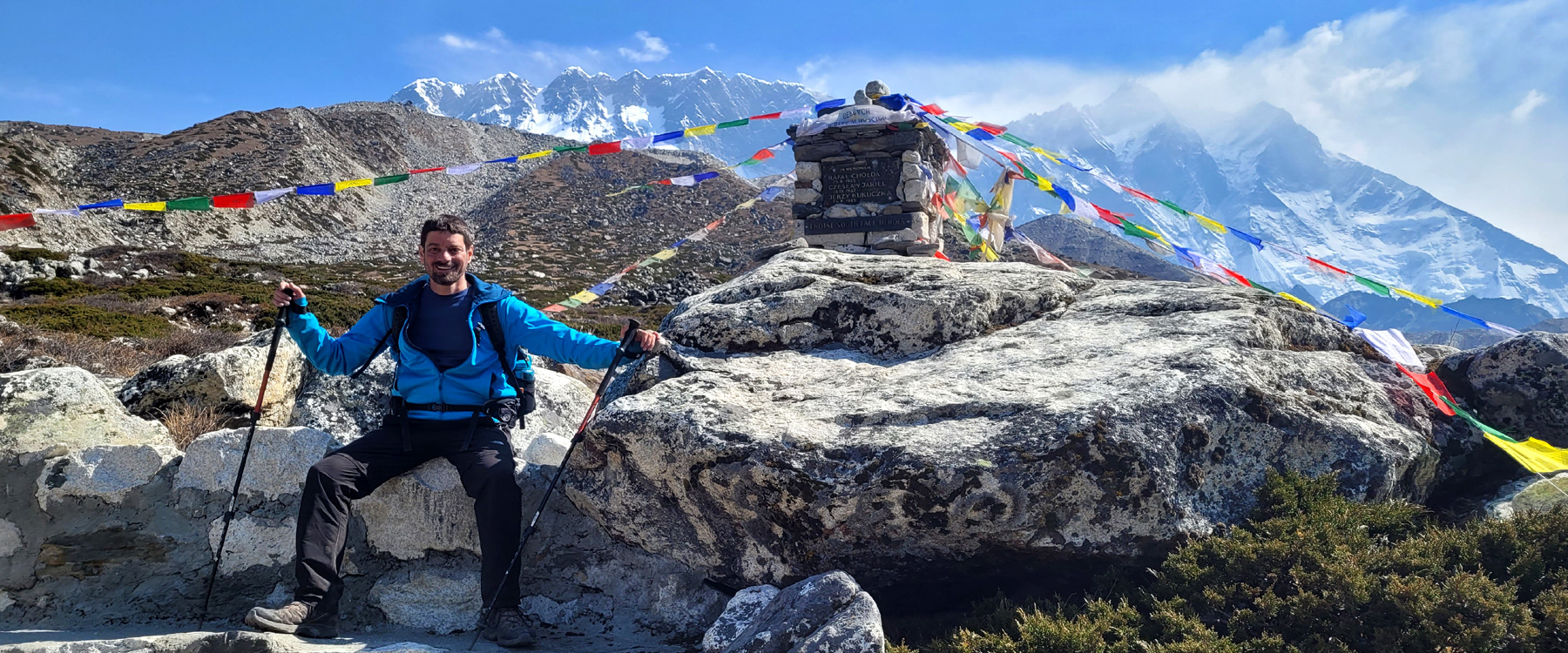- info@mountadventureholidays.com
- +977 - 9843746611

The Kanchenjunga Base Camp Trek is a challenging and exhilarating trek that takes you to the base camp of Mount Kanchenjunga, the third-highest mountain in the world. Located in the eastern region of Nepal, near the border with Sikkim, India, the trek offers stunning views of the Kanchenjunga massif, along with breathtaking landscapes, remote villages, and rich cultural experiences.
Here are some key details about the Kanchenjunga Base Camp Trek:
Trek Duration: The trek typically takes around 14-20 days to complete, depending on the itinerary and the pace of the trekking group.
Permits: Since the Kanchenjunga region falls under restricted areas in Nepal, you will need a special trekking permit, known as the Kanchenjunga Conservation Area Permit (KCAP), along with the Restricted Area Permit (RAP). These permits can be obtained through a registered trekking agency in Nepal.
Difficulty Level: The Kanchenjunga Base Camp Trek is considered to be a challenging trek, suitable for experienced trekkers. It involves long and strenuous ascents and descents, as well as remote and rugged terrain. Good physical fitness and previous high-altitude trekking experience are recommended.
Scenery and Highlights: The trek offers breathtaking views of snow-capped peaks, including Mount Kanchenjunga (8,586 meters) itself, as well as other prominent peaks like Mount Jannu, Mount Kabru, and Mount Rathong. You'll pass through diverse landscapes, including lush forests, terraced fields, alpine meadows, and high mountain passes. Along the way, you'll also have the opportunity to interact with local communities, such as the ethnic Rai and Limbu people, and experience their unique culture and traditions.
Accommodation: During the trek, you'll find basic tea houses and lodges in most villages along the trail. However, the availability and facilities may vary, and some parts of the trek may require camping.
Best Time to Trek: The best time to undertake the Kanchenjunga Base Camp Trek is during the spring (March to May) and autumn (September to November) seasons. These months offer stable weather conditions, clear skies, and better visibility of the mountain vistas.
It's important to note that the Kanchenjunga Base Camp Trek requires a certain level of preparation, including physical fitness training and acclimatization. Hiring an experienced guide or joining a reputable trekking agency is highly recommended for a safe and enjoyable experience.
What about the people’s lifestyle in the Kanchenjunga region?
The Kanchenjunga region of Nepal is home to various ethnic communities, each with its own distinct lifestyle and cultural practices. The predominant ethnic groups in the region are the Rai, Limbu, Sherpa, and Tamang communities.
Here are some insights into the lifestyle of these communities:
Rai and Limbu: The Rai and Limbu communities are indigenous to the eastern hills of Nepal, including the Kanchenjunga region. They have a rich cultural heritage and are known for their agricultural practices. Farming is the primary occupation, with terraced fields used for cultivating crops like rice, millet, maize, and vegetables. The Rai and Limbu people have a close connection with nature and traditionally follow animistic beliefs, worshipping various deities and spirits.
Sherpa: The Sherpa community, renowned for its mountaineering skills, is primarily concentrated in the Everest region of Nepal. However, some Sherpa communities also reside in the Kanchenjunga region. They have a unique culture deeply influenced by Tibetan Buddhism. Many Sherpas in the region are involved in trekking and mountaineering-related activities, serving as guides, porters, and running lodges along the trekking routes.
Tamang: The Tamang community is an indigenous group found in various parts of Nepal, including the Kanchenjunga region. They have a distinct culture and language. Traditionally, Tamangs were farmers and traders, but in recent years, some have also become involved in the tourism industry. Tamang communities often have their own unique festivals, music, and dance forms.
The people of the Kanchenjunga region lead a relatively simple and traditional lifestyle, deeply connected to their land and natural surroundings. Family and community play significant roles in their lives, and social ties are often strong. Hospitality is an integral part of their culture, and visitors are often welcomed with warmth and generosity.
In terms of clothing, traditional attire varies among the different communities. However, you may see locals wearing traditional garments like the Rai and Limbu men wearing a "daura suruwal" (a loose-fitting shirt and pants) and a topi (a cap), while women wear a "gunyo cholo" (a blouse) and a "patuka" (a waistband). Sherpas often wear their distinctive attire, including a "chuba" (a long-sleeved robe) for both men and women, along with a "koshi" (a headdress).
It's important to respect the local customs and traditions while visiting the Kanchenjunga region. Learning a few basic phrases in the local language, such as greetings, can go a long way in fostering positive interactions with the local communities and enriching your experience.
© Copyright 2025 Mount Adventure Holidays ,All rights reserved. | Developed by : Web Design In Nepal